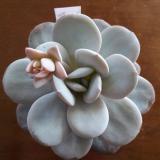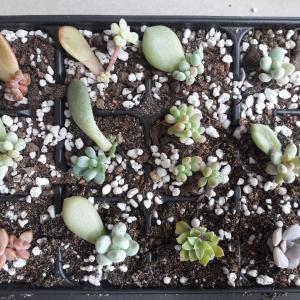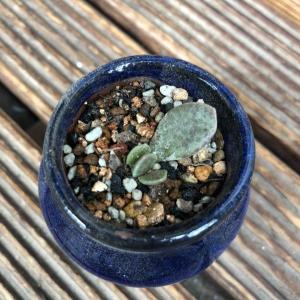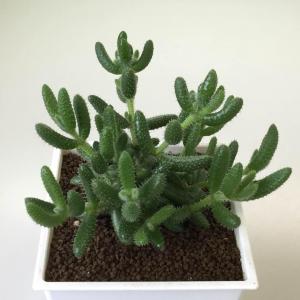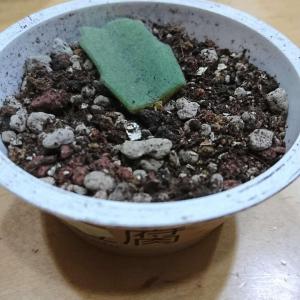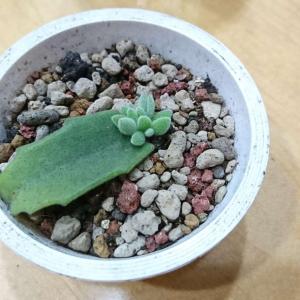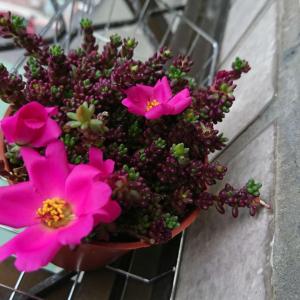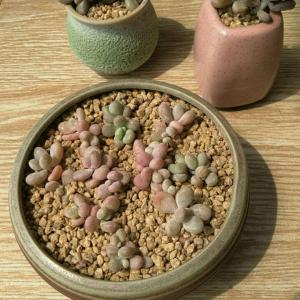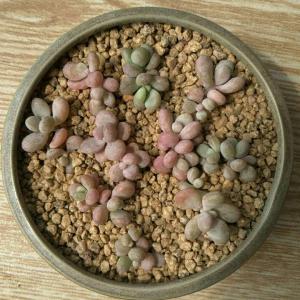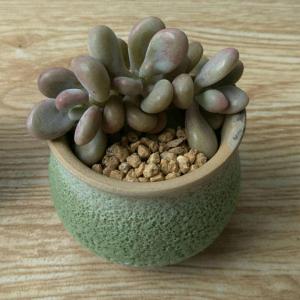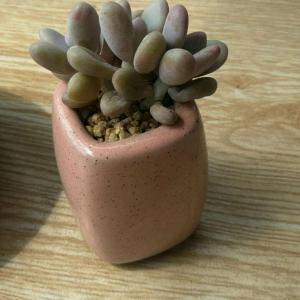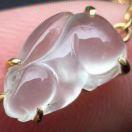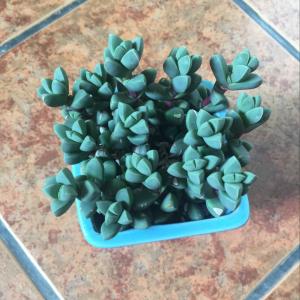文章
Miss Chen
2018年04月05日

Description: This climbing non-woody vine is a herbaceous perennial up to 8' long that branches occasionally. The light green to purple stems are terete, slightly speckled, glabrous, and often glaucous. Alternate leaves up to 3½" long and 2½" across occur at intervals along each stem; they are ovate-oval to broadly ovate-lanceolate in shape, smooth along their margins, and parallel-veined. The upper surfaces of the leaves are medium green and glabrous, while their lower surfaces are pale green and hairless. There are no hairs along the raised veins on the leaf undersides. The petioles of the leaves are up to 1¾" long, light green, and hairless. At the base of most petioles, there is a pair of tendrils that can cling to adjacent vegetation or objects for support. At the base of each stem on the vine, there is an appressed to slightly spreading sheath that is usually bladeless.

Individual umbels of flowers are produced from the axils of the middle to upper leaves of each mature vine. Each umbel is connected to the stem by a long stout peduncle about 4-10" long. The peduncles are 4-8 times longer than the petioles of adjacent leaves; they are similar in appearance to the stems. Individual umbels are about 1½–3" across, consisting of 20-120 flowers on slender pedicels; when fully developed, they are globoid in shape. Like other species in this genus, Smooth Carrion Flower is dioecious; some vines produce only staminate (male) flowers, while other vines produce only pistillate (female) flowers. The green to yellowish green staminate flowers are individually about ¼" across, consisting of 6 lanceolate tepals and 6 stamens with white anthers. The green to yellowish green pistillate flowers are individually about ¼" across, consisting of 6 lanceolate tepals and a pistil with 3 flattened stigmata. The tepals of both kinds of flowers are often recurved. The blooming period occurs from late spring to early summer and lasts about 3 weeks. The flowers often have a carrion-like scent, but itsDistribution Map presence and strength varies with the local ecotype. Staminate flowers wither away after blooming, while pistillate flowers are replaced by globoid fleshy berries. Individual berries are about ¼" across and contain about 3-5 seeds; they are dark blue and glaucous at maturity. At the end of the growing season, the entire vine dies down to the ground.
Cultivation: Smooth Carrion Flower prefers full or partial sun and more or less mesic conditions. It flourishes in different kinds of soil, including those that are rocky or loamy. In a shady situation, this vine may fail to produce flowers.
Range & Habitat: According to official records, Smooth Carrion Flower is rare in Illinois. However, in neighboring states this vine has been found in many counties and it is regarded as more common. It is possible that some records of Smilax lasioneura (Common Carrion Flower) in Illinois are based on misidentifications and it was Smooth Carrion Flower that was observed. These two species are very similar in appearance and easily confused. Habitats of the native Smooth Carrion Flower include savannas, thickets, prairies, rocky upland woodlands, woodland openings, woodland borders, and fence rows. Occasional wildfires appear to be beneficial in managing populations of this species.
Faunal Associations: The flowers are pollinated primarily by small bees, miscellaneous flies, and beetles. Fly visitors include Flesh flies, Blow flies, Muscid flies, Syrphid flies, mosquitoes, and other species. The bees suck nectar or collect pollen, while the flies and beetles suck nectar or feed on pollen. The butterfly Megisto cymela (Little Wood Satyr) has been observed sucking nectar from Carrion Flower as well. Insects that feed on the foliage of Smilax spp. (whether Greenbriers or Carrion Flowers) include the flea beetle Pachyonychus paradoxus, the thrips Ctenothrips bridwelli, and the caterpillars of several moths, including Acrolepiopsis incertella (Carrion Flower Moth), Phosphila miselioides (Spotted Phosphila), Phosphila turbulenta (Turbulent Phosphila), and Phyprosopus callitrichoides (Curve-Lined Owlet). In addition to these species, the caterpillars of Papaipema unimoda (Meadow Rue Borer Moth) sometimes bore into the stems of Carrion Flowers. The berries of Smilax spp. are eaten by some upland gamebirds and songbirds (see the Bird Table); the Ruffed Grouse and Wild Turkey also eat the young leaves and buds of these vines. The berries are a minor source of food to some mammals: this includes the Black Bear, Opossum, Raccoon, Fox Squirrel, and Gray Squirrel. The leaves and stems are browsed by the White-Tailed Deer and Cottontail Rabbit.
Photographic Location: The Loda Cemetery Prairie in the southwest corner of Iroquois County, Illinois.
Comments: Species in the Smilax genus fall into two large groups: woody vines with prickles or bristles (Green Briers, Catbriers) and non-woody vines that are devoid of prickles or bristles (Carrion Flowers). In Illinois, there are 5 species of Carrion Flower that are currently recognized; some of these species were regarded as mere varieties of Smilax herbacea in the past. Smooth Carrion Flower can be distinguished from similar species using one or more of the following criteria: 1) the undersides of its leaves are pale green and totally hairless, 2) its umbel-bearing peduncles are at least 4 times longer than the petioles of adjacent leaves, and 3) it is a climbing or sprawling vine with numerous tendrils. The very similar Smilax lasioneura (Common Carrion Flower) has fine hairs along the veins of its leaf undersides (and sometimes between the veins as well) while its peduncles are less than 4 times the length of the petioles of the adjacent leaves. Another similar species, Smilax pulverulenta (Powdery Carrion Flower), has leaf undersides that are medium green and it also has fine hairs along its veins. The remaining Carrion Flowers in Illinois are shorter vines with an upright habit of growth and they have much fewer, if any, tendrils.

Individual umbels of flowers are produced from the axils of the middle to upper leaves of each mature vine. Each umbel is connected to the stem by a long stout peduncle about 4-10" long. The peduncles are 4-8 times longer than the petioles of adjacent leaves; they are similar in appearance to the stems. Individual umbels are about 1½–3" across, consisting of 20-120 flowers on slender pedicels; when fully developed, they are globoid in shape. Like other species in this genus, Smooth Carrion Flower is dioecious; some vines produce only staminate (male) flowers, while other vines produce only pistillate (female) flowers. The green to yellowish green staminate flowers are individually about ¼" across, consisting of 6 lanceolate tepals and 6 stamens with white anthers. The green to yellowish green pistillate flowers are individually about ¼" across, consisting of 6 lanceolate tepals and a pistil with 3 flattened stigmata. The tepals of both kinds of flowers are often recurved. The blooming period occurs from late spring to early summer and lasts about 3 weeks. The flowers often have a carrion-like scent, but itsDistribution Map presence and strength varies with the local ecotype. Staminate flowers wither away after blooming, while pistillate flowers are replaced by globoid fleshy berries. Individual berries are about ¼" across and contain about 3-5 seeds; they are dark blue and glaucous at maturity. At the end of the growing season, the entire vine dies down to the ground.
Cultivation: Smooth Carrion Flower prefers full or partial sun and more or less mesic conditions. It flourishes in different kinds of soil, including those that are rocky or loamy. In a shady situation, this vine may fail to produce flowers.
Range & Habitat: According to official records, Smooth Carrion Flower is rare in Illinois. However, in neighboring states this vine has been found in many counties and it is regarded as more common. It is possible that some records of Smilax lasioneura (Common Carrion Flower) in Illinois are based on misidentifications and it was Smooth Carrion Flower that was observed. These two species are very similar in appearance and easily confused. Habitats of the native Smooth Carrion Flower include savannas, thickets, prairies, rocky upland woodlands, woodland openings, woodland borders, and fence rows. Occasional wildfires appear to be beneficial in managing populations of this species.
Faunal Associations: The flowers are pollinated primarily by small bees, miscellaneous flies, and beetles. Fly visitors include Flesh flies, Blow flies, Muscid flies, Syrphid flies, mosquitoes, and other species. The bees suck nectar or collect pollen, while the flies and beetles suck nectar or feed on pollen. The butterfly Megisto cymela (Little Wood Satyr) has been observed sucking nectar from Carrion Flower as well. Insects that feed on the foliage of Smilax spp. (whether Greenbriers or Carrion Flowers) include the flea beetle Pachyonychus paradoxus, the thrips Ctenothrips bridwelli, and the caterpillars of several moths, including Acrolepiopsis incertella (Carrion Flower Moth), Phosphila miselioides (Spotted Phosphila), Phosphila turbulenta (Turbulent Phosphila), and Phyprosopus callitrichoides (Curve-Lined Owlet). In addition to these species, the caterpillars of Papaipema unimoda (Meadow Rue Borer Moth) sometimes bore into the stems of Carrion Flowers. The berries of Smilax spp. are eaten by some upland gamebirds and songbirds (see the Bird Table); the Ruffed Grouse and Wild Turkey also eat the young leaves and buds of these vines. The berries are a minor source of food to some mammals: this includes the Black Bear, Opossum, Raccoon, Fox Squirrel, and Gray Squirrel. The leaves and stems are browsed by the White-Tailed Deer and Cottontail Rabbit.
Photographic Location: The Loda Cemetery Prairie in the southwest corner of Iroquois County, Illinois.
Comments: Species in the Smilax genus fall into two large groups: woody vines with prickles or bristles (Green Briers, Catbriers) and non-woody vines that are devoid of prickles or bristles (Carrion Flowers). In Illinois, there are 5 species of Carrion Flower that are currently recognized; some of these species were regarded as mere varieties of Smilax herbacea in the past. Smooth Carrion Flower can be distinguished from similar species using one or more of the following criteria: 1) the undersides of its leaves are pale green and totally hairless, 2) its umbel-bearing peduncles are at least 4 times longer than the petioles of adjacent leaves, and 3) it is a climbing or sprawling vine with numerous tendrils. The very similar Smilax lasioneura (Common Carrion Flower) has fine hairs along the veins of its leaf undersides (and sometimes between the veins as well) while its peduncles are less than 4 times the length of the petioles of the adjacent leaves. Another similar species, Smilax pulverulenta (Powdery Carrion Flower), has leaf undersides that are medium green and it also has fine hairs along its veins. The remaining Carrion Flowers in Illinois are shorter vines with an upright habit of growth and they have much fewer, if any, tendrils.
0
0
文章
Miss Chen
2018年04月03日

Description: This herbaceous perennial plant is 3-8' tall; it branches occasionally in the upper half. The stems are light green, terete, usually glabrous, and sometimes glaucous. The alternate leaves are up to 12" long and 12" across, becoming gradually smaller as they ascend the stems. These leaves spread outward from their stems on narrowly winged petioles and they have a tendency to droop. The lower to middle leaves have 3-7 large lobes and smooth to coarsely dentate margins. The lobes of these leaves are elliptic to ovate in shape; the terminal lobes of some leaves are subdivided into 2 smaller lobes. Sometimes the lower leaves are pinnate with a pair of basal leaflets and a lobed terminal leaflet. The uppermost leaves on the flowering stalks are much smaller in size and lanceolate to ovate in shape; they lack lobes. The upper leaf surface is dark green and hairless to sparingly short-hairy, while the lower leaf surface is pale-medium green and glabrous to sparingly hairy.
Flowering Plants
The upper stems terminate in either individual or cyme-like clusters of flowerheads on stalks 2" or more in length. Each flowerhead spans about 2-3" across; it has a daisy-like structure consisting of a globoid central cone that is surrounded by 6-12 ray florets. The central cone is light green while immature, but it later becomes yellow and resembles a pincushion to some extent because of the corollas of its tubular disk florets. The petaloid rays surrounding the central cone are yellow, oblong in shape, and drooping. The base of each flowerhead is defined by 8-15 floral bracts (phyllaries); these bracts are light green, oblong-ovate in shape, and hairless to hairy. The blooming period occurs from mid-summer to early fall and lasts about 1-2 months. Each disk floret is replaced by an oblongoid achene (3-4.5 mm. in length) that has a crown of tiny blunt teeth at its apex. The root system is fibrous and rhizomatous. Clonal colonies of plants are often formed from the long rhizomes.

Cultivation: The preference is partial sun, moist conditions, and fertile loam or silt-loam. At a site that is too sunny and dry, the leaves may droop excessively and wither away, otherwise this plant is easy to cultivate. In some areas, it may spread aggressively by means of its rhizomes.
Range & Habitat: Cutleaf Coneflower is widely distributed and occasional to locally common in most areas of Illinois (see Distribution Map), where it is native. Habitats include open bottomland forests, moist meadows in wooded areas, woodland borders, moist thickets, sloughs in partially shaded areas, low areas along rivers, partially shaded river banks, calcareous seeps, margins of poorly drained fields, and pastures. Occasionally, this species is grown in flower gardens. It prefers partially shaded areas that are poorly drained and may be prone to occasional flooding during the spring.

Faunal Associations: The nectar and pollen of the flowerheads attract many kinds of insects, including long-tongued bees, short-tongued bees, predatory wasps, butterflies, skippers, moths, and various kinds of flies. Insects that feed destructively on the Cutleaf Coneflower include the leaf beetle Sumitrosis inequalis, Uroleucon rudbeckiae (Golden Glow Aphid), larvae of the fruit fly Strauzia intermedia, leaf-mining larvae of the moth Marmara auratella, and larvae of the butterfly, Chlosyne nycteis (Silvery Checkerspot). Other insects that feed on this and other coneflowers (Rudbeckia spp.) include the larvae of gall flies, larvae of the sawfly Macrophya simillima, and larvae of some Tortricid moths. Larvae of such moths as Synchlora aerata (Wavy-Lined Emerald) and Eupithecia miserulata (Common Pug) feed on the florets. A bird, the Common Goldfinch, eats the seeds to a limited extent. The foliage of Cutleaf Coneflower may be somewhat poisonous to some mammalian herbivores.
Photographic Location: A flower garden in Urbana, Illinois, and an area that is adjacent to a pond at Crystal Lake Park in the same city.

Comments: This is a tall-growing wildflower with a rather lanky appearance. A cultivar of this species, called 'Golden Glow' has double flowerheads with more ray florets (greater than 12) than the wild form. Cutleaf Coneflower is one of several Rudbeckia spp. with yellow flowerheads. It has larger and more widely separated disk florets than these other species, which provides the mature central cone of its flowerheads with a slight pincushion appearance. The central cones of Cutleaf Coneflower are light green to yellow (depending on their maturity), while the central cones of other Rudbeckia spp. are dark brown to black (e.g., Rudbeckia hirta, Rudbeckia triloba, & Rudbeckia fulgida) or grey to brown (e.g., Rudbeckia pinnata). The leaves of Cutleaf Coneflower have 3-7 deep lobes, while the leaves of other Rudbeckia spp. have fewer lobes or none. An exception is Rudbeckia pinnata (Yellow Coneflower), which has leaves with as many lobes. However, the lobes on its leaves are more narrow than those of Cutleaf Coneflower. Other common names of Rudbeckia laciniata include Green-headed Coneflower and Wild Golden Glow.
Flowering Plants
The upper stems terminate in either individual or cyme-like clusters of flowerheads on stalks 2" or more in length. Each flowerhead spans about 2-3" across; it has a daisy-like structure consisting of a globoid central cone that is surrounded by 6-12 ray florets. The central cone is light green while immature, but it later becomes yellow and resembles a pincushion to some extent because of the corollas of its tubular disk florets. The petaloid rays surrounding the central cone are yellow, oblong in shape, and drooping. The base of each flowerhead is defined by 8-15 floral bracts (phyllaries); these bracts are light green, oblong-ovate in shape, and hairless to hairy. The blooming period occurs from mid-summer to early fall and lasts about 1-2 months. Each disk floret is replaced by an oblongoid achene (3-4.5 mm. in length) that has a crown of tiny blunt teeth at its apex. The root system is fibrous and rhizomatous. Clonal colonies of plants are often formed from the long rhizomes.

Cultivation: The preference is partial sun, moist conditions, and fertile loam or silt-loam. At a site that is too sunny and dry, the leaves may droop excessively and wither away, otherwise this plant is easy to cultivate. In some areas, it may spread aggressively by means of its rhizomes.
Range & Habitat: Cutleaf Coneflower is widely distributed and occasional to locally common in most areas of Illinois (see Distribution Map), where it is native. Habitats include open bottomland forests, moist meadows in wooded areas, woodland borders, moist thickets, sloughs in partially shaded areas, low areas along rivers, partially shaded river banks, calcareous seeps, margins of poorly drained fields, and pastures. Occasionally, this species is grown in flower gardens. It prefers partially shaded areas that are poorly drained and may be prone to occasional flooding during the spring.

Faunal Associations: The nectar and pollen of the flowerheads attract many kinds of insects, including long-tongued bees, short-tongued bees, predatory wasps, butterflies, skippers, moths, and various kinds of flies. Insects that feed destructively on the Cutleaf Coneflower include the leaf beetle Sumitrosis inequalis, Uroleucon rudbeckiae (Golden Glow Aphid), larvae of the fruit fly Strauzia intermedia, leaf-mining larvae of the moth Marmara auratella, and larvae of the butterfly, Chlosyne nycteis (Silvery Checkerspot). Other insects that feed on this and other coneflowers (Rudbeckia spp.) include the larvae of gall flies, larvae of the sawfly Macrophya simillima, and larvae of some Tortricid moths. Larvae of such moths as Synchlora aerata (Wavy-Lined Emerald) and Eupithecia miserulata (Common Pug) feed on the florets. A bird, the Common Goldfinch, eats the seeds to a limited extent. The foliage of Cutleaf Coneflower may be somewhat poisonous to some mammalian herbivores.
Photographic Location: A flower garden in Urbana, Illinois, and an area that is adjacent to a pond at Crystal Lake Park in the same city.

Comments: This is a tall-growing wildflower with a rather lanky appearance. A cultivar of this species, called 'Golden Glow' has double flowerheads with more ray florets (greater than 12) than the wild form. Cutleaf Coneflower is one of several Rudbeckia spp. with yellow flowerheads. It has larger and more widely separated disk florets than these other species, which provides the mature central cone of its flowerheads with a slight pincushion appearance. The central cones of Cutleaf Coneflower are light green to yellow (depending on their maturity), while the central cones of other Rudbeckia spp. are dark brown to black (e.g., Rudbeckia hirta, Rudbeckia triloba, & Rudbeckia fulgida) or grey to brown (e.g., Rudbeckia pinnata). The leaves of Cutleaf Coneflower have 3-7 deep lobes, while the leaves of other Rudbeckia spp. have fewer lobes or none. An exception is Rudbeckia pinnata (Yellow Coneflower), which has leaves with as many lobes. However, the lobes on its leaves are more narrow than those of Cutleaf Coneflower. Other common names of Rudbeckia laciniata include Green-headed Coneflower and Wild Golden Glow.
0
0
文章
Miss Chen
2018年04月01日

Description: This woody shrub is 2-8' tall. Depending on the variety, it is variable in size and branching habit. Fragrant Sumac can be an erect shrub with ascending branches, or it can be a low shrub with spreading branches. The trunk and lower branches are greyish brown and woody, while the upper branches are more or less pubescent. The alternate leaves are trifoliate. The individual leaflets are up to 3" long and 1½" across, although they are often half this size. The terminal leaflet is somewhat larger than the lateral leaflets. They are elliptic, oval-ovate, oblanceolate, or obovate in shape, coarsely crenate or shallowly cleft along their margins, and green, yellowish green, or red. The upper surface of each leaflet is glabrous to finely pubescent (canescent), while the lower surface is sparsely pubescent to softly hairy. Each leaflet is sessile, or it has a short petiole. The crushed foliage has a pleasant bittersweet fragrance. Occasionally, short spikes of flowers or panicles of floral spikes are produced from the axils of the leaves. These flowers can appear before or during the early development of the leaves. Each floral spike is up to 1" long. The individual flowers are greenish yellow, short-tubular in shape, and about 1/8" long; they can be perfect or unisexual (male or female).

The blooming period occurs during the spring. During the summer, the flowers are replaced by hairy red drupes. Each drupe is up to ¼" across and globoid-ovoid in shape; it contains a single stone (seed with a hard coat). The root system consists of a woody branching taproot.
Cultivation: The preference is full or partial sun, dry conditions, and soil that is sandy or rocky. However, this shrub will adapt to mesic conditions with fertile loamy soil if there is not too much competition from other species of plants.
Range & Habitat: The native Aromatic Sumac is occasional in parts of southern, western, and northern Illinois; it is uncommon or absent from east central Illinois (see Distribution Map). This map combines the distribution of the different varieties of Aromatic Sumac. Aromatic Sumac is more tree-like and erect in southern Illinois, but a low spreading shrub elsewhere in the state. Habitats include thinly wooded bluffs, upland rocky woods, barren rocky areas, limestone glades, sandy savannas, sand prairies, and sand dunes. Aromatic Sumac is often cultivated as an ornamental shrub in yards or along buildings and city streets.
Faunal Associations: The nectar and/or pollen of the flowers attract small bees (especially Halictid & Andrenid bees), Syrphid flies, and a variety of other flies. Small Carpenter bees (Ceratina spp.) create tunnel-nests in the pith of sumac stems. The adults and larvae of Blepharida rhois (Sumac Flea Beetle) feed on the foliage of Aromatic Sumac and other species of sumac (Rhus spp.). Other insects that reportedly feed on sumac include larvae of Oberea ocellata (Sumac Stem Borer), Melaphis rhois (Sumac Gall Aphid), larvae of Asphondylia integrifoliae (Sumac Flowerbud Gall Midge), and the caterpillars of several moths and butterflies (see Moth & Butterfly Table). The hairy red drupes of sumac are largely used as emergency food by birds during the winter or when little else is available. Nonetheless, a large number of bird species have been observed eating these drupes (see Bird Table for a listing of these species). The White-Tailed Deer browses on the woody stems and leaves, while the Cottontail Rabbit gnaws on the bark of sumac during the winter.

Photographic Location: The floral spikes were photographed along a city street in Champaign, Illinois. The trifoliate leaves and hairy red drupes were photographed on a stabilized sand dune near Lake Michigan at the Indiana Dunes State Park in NW Indiana.
Comments: Fragrant Sumac is smaller and less aggressive than Rhus glabra (Smooth Sumac) and Rhus typhina (Staghorn Sumac). The flowers of Fragrant Sumac bloom earlier in the spring and its drupes ripen earlier in the summer than these other species. Its compound leaves are trifoliate, while the odd-pinnate leaves of other Sumacs in Illinois have many more leaflets than this. These other Sumacs also lack the aromatic foliage of Fragrant Sumac.

The blooming period occurs during the spring. During the summer, the flowers are replaced by hairy red drupes. Each drupe is up to ¼" across and globoid-ovoid in shape; it contains a single stone (seed with a hard coat). The root system consists of a woody branching taproot.
Cultivation: The preference is full or partial sun, dry conditions, and soil that is sandy or rocky. However, this shrub will adapt to mesic conditions with fertile loamy soil if there is not too much competition from other species of plants.
Range & Habitat: The native Aromatic Sumac is occasional in parts of southern, western, and northern Illinois; it is uncommon or absent from east central Illinois (see Distribution Map). This map combines the distribution of the different varieties of Aromatic Sumac. Aromatic Sumac is more tree-like and erect in southern Illinois, but a low spreading shrub elsewhere in the state. Habitats include thinly wooded bluffs, upland rocky woods, barren rocky areas, limestone glades, sandy savannas, sand prairies, and sand dunes. Aromatic Sumac is often cultivated as an ornamental shrub in yards or along buildings and city streets.
Faunal Associations: The nectar and/or pollen of the flowers attract small bees (especially Halictid & Andrenid bees), Syrphid flies, and a variety of other flies. Small Carpenter bees (Ceratina spp.) create tunnel-nests in the pith of sumac stems. The adults and larvae of Blepharida rhois (Sumac Flea Beetle) feed on the foliage of Aromatic Sumac and other species of sumac (Rhus spp.). Other insects that reportedly feed on sumac include larvae of Oberea ocellata (Sumac Stem Borer), Melaphis rhois (Sumac Gall Aphid), larvae of Asphondylia integrifoliae (Sumac Flowerbud Gall Midge), and the caterpillars of several moths and butterflies (see Moth & Butterfly Table). The hairy red drupes of sumac are largely used as emergency food by birds during the winter or when little else is available. Nonetheless, a large number of bird species have been observed eating these drupes (see Bird Table for a listing of these species). The White-Tailed Deer browses on the woody stems and leaves, while the Cottontail Rabbit gnaws on the bark of sumac during the winter.

Photographic Location: The floral spikes were photographed along a city street in Champaign, Illinois. The trifoliate leaves and hairy red drupes were photographed on a stabilized sand dune near Lake Michigan at the Indiana Dunes State Park in NW Indiana.
Comments: Fragrant Sumac is smaller and less aggressive than Rhus glabra (Smooth Sumac) and Rhus typhina (Staghorn Sumac). The flowers of Fragrant Sumac bloom earlier in the spring and its drupes ripen earlier in the summer than these other species. Its compound leaves are trifoliate, while the odd-pinnate leaves of other Sumacs in Illinois have many more leaflets than this. These other Sumacs also lack the aromatic foliage of Fragrant Sumac.
0
0


